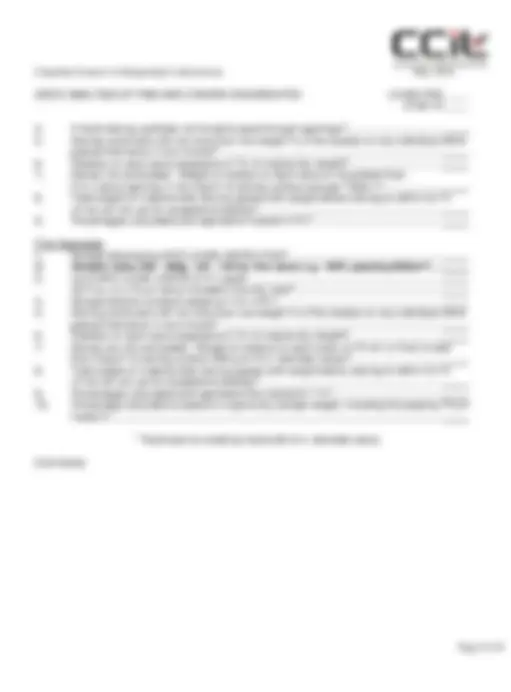



Study with the several resources on Docsity

Earn points by helping other students or get them with a premium plan


Prepare for your exams
Study with the several resources on Docsity

Earn points to download
Earn points by helping other students or get them with a premium plan
Community
Ask the community for help and clear up your study doubts
Discover the best universities in your country according to Docsity users
Free resources
Download our free guides on studying techniques, anxiety management strategies, and thesis advice from Docsity tutors
The apparatus and procedure for conducting a sieve analysis of fine and coarse aggregates, as outlined in the canadian council of independent laboratories ls-602-r30 and c136-14 standards. The requirements for sieves, balances, mechanical shakers, and ovens, as well as the procedure for sieving and recording results.
What you will learn
Typology: Lecture notes
1 / 3

This page cannot be seen from the preview
Don't miss anything!


MTO & ASTM: For fine agg: Readable to 0.1 g, accurate to 0.1% of test load?..............
Balance:
For co. agg: Readable to 0.5 g and accurate to 0.1% of test load?.........
Mechanical sieve shakers (Optional), meet adequacy of sieving requirements?.............
Oven, maintains 110 ± 5ºC?.............................................................................................
Splitter(s): with a minimum of three pans …………………………………………………..._____
Splitter 1: No. Chutes: ____ Chute width: ____ Condition: _______________________ No. Pans: ____ Condition: __________________________________________
Splitter 2: No. Chutes: ____ Chute width: ____ Condition: _______________________ No. Pans: ____ Condition: __________________________________________
(Fill in Y for Yes - N for NO - NA for Not Applicable. ( Note : N or NA require comment below)
Type of shaker: ____________________________ Sieve: _____________________
Time m/s
Mass after sieving, g
% Capacity Test Mass, g
Mass Passing, g
% Test Mass
Meets? Y/N
Comments:
Type of shaker: ____________________________ Sieve: _____________________
Time m/s
Mass after sieving, g
% Capacity Test Mass, g
Mass Passing, g
% Test Mass
Meets? Y/N
Comments:
Nominal Dimension of Sieve Sieve Opening Size, mm
203.2 mm dia. (8-inch)
254 mm dia. (10-inch)
304.8 mm dia. (12-inch)
350 x 350 mm (14 x 14-inch)
372 x 580 mm (16 x 24-inch) Sieving Area, m 2 0.0285 0.0457 0.0670 0.1225 0. 125 c^ c^ c^ c^ 67. 100 c c c 30.6 53. 90 c c 15.1 27.6 48. 75 c 8.6 12.6 23.0 40. 63 c 7.2 10.6 19.3 34. 50 3.6 5.7 8.4 15.3 27. 37.5 2.7 4.3 6.3 11.5 20. 26.5 1.8 2.9 4.2 7.7 13. 19.0 1.4 2.2 3.2 5.8 10. 13.2 0.89 1.4 2.1 3.8 6. 9.5 0.67 1.1 1.6 2.9 5. 4.75 0.33 0.54 0.80 1.5 2. c Sieves indicated have less than five full openings and should not be used for sieve testing except as provided for in ASTM C 136, 8.
_1. Sampled in accordance with LS-625, ASTM D75? ................................................. ______
Sampling
_2. Where no specification, sample four times minimum mass given in Table 1? .. ______
Coarse Aggregate
Nom.Max.Size Min. Mass, kg Nom.Max.Size Min. Mass, kg 9.5 mm 1 26.5 mm 10 13.2 mm 2 37.5 mm 15 16.0 mm 3.5 53.0 mm 20 19.0 mm 5 63.0 mm 25 75.0 mm 45